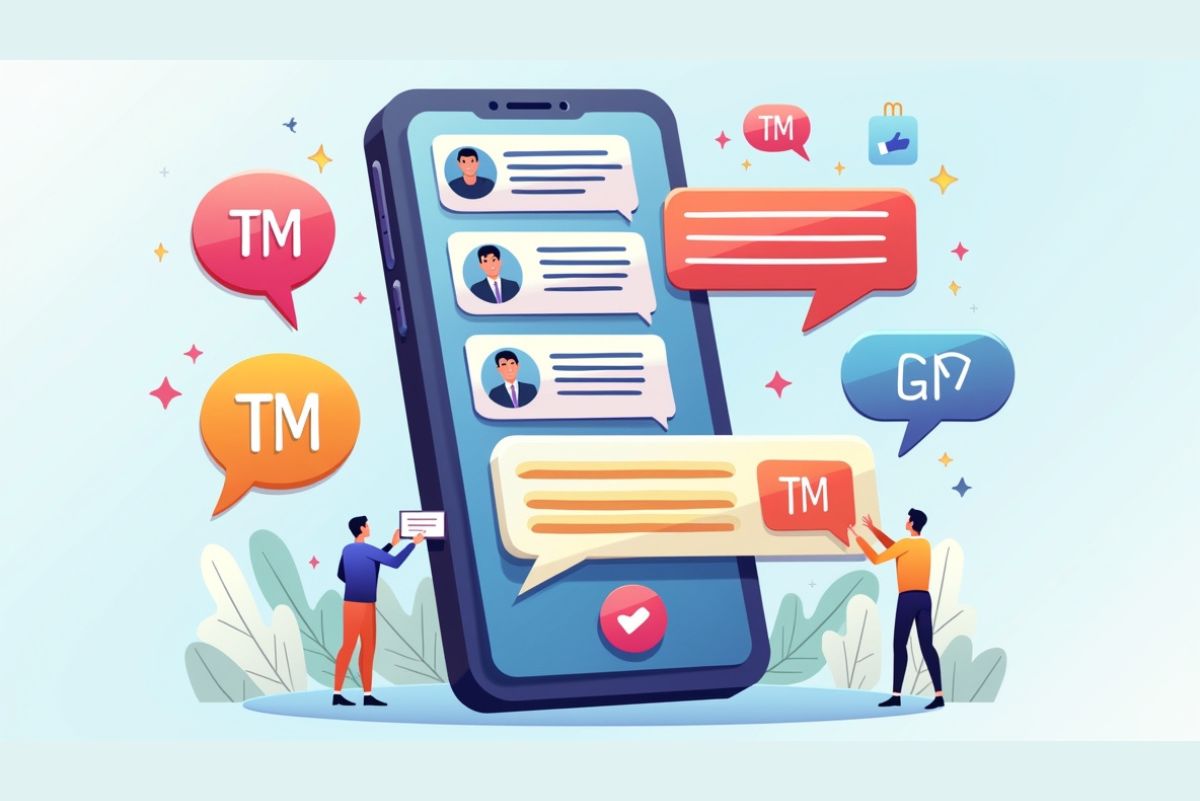Understanding TM in text is more important than ever in today’s fast-moving digital world. This simple acronym carries multiple meanings depending on where and how you see it. Whether you’re texting friends, chatting in a business setting, or scrolling through social media, knowing the TM meaning in social media and everyday conversations helps avoid confusion.
The rise of casual texting acronyms and internet slang TM means people often use it without thinking twice. But mixing TM in professional texts with informal slang can lead to misunderstandings. That’s why it’s smart to learn the different uses and explore the best TM alternatives for clear, effective communication in 2025.
What Does TM Mean in Text Messages
TM text abbreviation can stand for several phrases, making it a versatile yet sometimes puzzling acronym. The most common meanings include Text Me, Trust Me, Too Much, and Trademark abbreviation. Knowing these helps you read messages accurately and respond appropriately.
Most people encounter TM slang meaning in casual texting, but it also appears in professional settings or social media, where tone and intention might differ greatly.
Different TM Meanings Explained
The TM acronym can represent:
- Text Me — inviting someone to send a message or start a conversation
- Trust Me — a way to emphasize sincerity or honesty
- Too Much — used to express something overwhelming or excessive
- Trademark — a legal term often seen in business or branding contexts
Each meaning depends on the conversation’s tone and context. For example, TM in chat among friends often means “Text Me,” while in business emails, it might refer to a trademark symbol.
How to Use TM Correctly in Texting
Knowing how to use TM is essential to avoid misunderstandings. Use TM texting meaning that fits your audience: informal for friends, but steer clear of slang in professional or formal messages. When in doubt, spell it out for clarity.
Also, be mindful of TM usage mistakes like using it as a universal abbreviation or mixing slang with formal communication.
When Not to Use TM in Professional Texts
In business or formal communication, avoid relying on TM in professional texts unless you mean “Trademark.” Using slang like Trust Me abbreviation or Text Me abbreviation can appear unprofessional and cause confusion. Instead, opt for clear and respectful language aligned with professional texting language standards.
Best Alternatives to TM for Clear Communication
If you want to avoid ambiguity, here are some effective TM alternatives:
| TM Meaning | Better Alternatives |
|---|---|
| Text Me | Ping me, message me, drop a line |
| Trust Me | Believe me, seriously, honestly |
| Too Much | Over the top, overwhelming, intense |
| Trademark | Use ™ symbol or write “trademark” |
Choosing alternatives improves understanding and keeps your messages friendly and professional.
TM Examples Showing Different Meanings
Here are some TM examples to illustrate how the meaning changes:
- “Hit me up tm” — could mean “Text Me” or “Tomorrow”
- “This deal is tm expensive” — likely “Too Much”
- “Our logo has TM” — refers to “Trademark”
- “Trust me tm, you’ll like it” — “Trust Me”
Cultural and Social Media Variations of TM
The TM meaning in social media and texting shifts with culture and platform. Younger users may favor casual texting acronyms, while others might misunderstand the shorthand. In global conversations, the TM meaning in different countries can vary, so adjusting to multicultural texting norms ensures smoother communication.
FAQs About TM in Text Messages
What does TM stand for in texting?
TM commonly means Text Me, Trust Me, Too Much, or Trademark depending on context.
Can TM be used in professional texts?
Only when referring to Trademark; avoid slang like Text Me or Trust Me in formal communication.
What are good alternatives to TM?
Use clear phrases like “Ping me,” “Believe me,” or “Over the top” based on the intended meaning.
Final Thoughts
Understanding TM in text is important for clear communication. It can mean different things like Text Me, Trust Me, or Too Much. Using it the right way depends on who you’re talking to and the situation. In casual chats, it’s fine. But in professional messages, it’s better to use clear alternatives. This avoids confusion and keeps your tone respectful. Always think about your audience before sending shorthand like TM. When used well, TM in text makes your messages quick and easy to understand.
